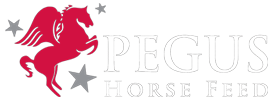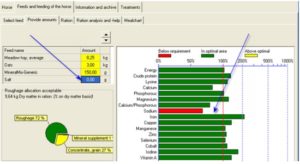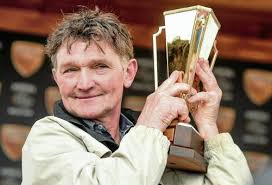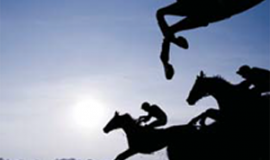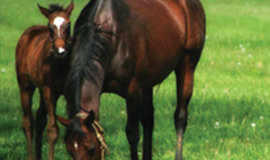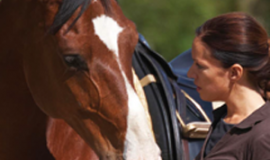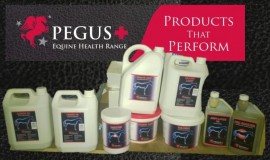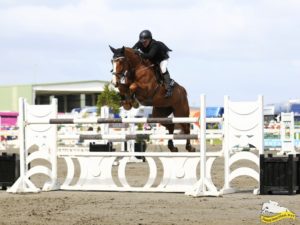We have come to August, and it is summer. This means that your horses need more salt because of the heat, particularly when exercised heavily. A reduction in the fluid volume of the body quickly impairs the performance of horses.
The water in the body, which constitutes 60-70% of body weight, has about 10 grams of dissolved salts (minerals) per liter. The salts contribute in an essential way to the functional properties of the body fluids. When salts are dissolved in blood plasma and cell fluid we refer to them as ions or electrolytes. Water intake and fluid balance is regulated both by the water and the electrolytes. The main electrolytes in the body are sodium (Na), potassium (K) and chlorine (Cl). The horse gets its minerals through the feed. In addition to the minerals that occur naturally in plant material, we must in many situations supplement the diet to obtain mineral balance. Concentrates, mineral mixtures and additional salt supplements are used. Common cooking salt has the chemical formula NaCl, and thus consists of sodium and chlorine. When we give a horse the required amount of salt in the ration, we have covered two of the three major electrolytes.
Na-Req
The graph shows the requirement for sodium in grams per day (blue bars). Red bars show how much salt (sodium chloride) we need to provide to meet this requirement at different exercise intensities. Daily salt intake must be increased from about 30 grams in a maintenance situation, to more than 120 grams when the horse is exercised intensively. Calculations apply to the summer season, and a body mass of 500 kg. During the winter, requirements will usually be lower, due to lower losses of sodium and chloride through sweat.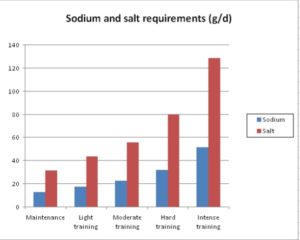
What about potassium? We are not supplying potassium by giving salt in the diet. However, there is plenty of potassium in forage, silage and hay. Normally, the potassium content in roughages will be 20 – 30 grams per kg of dry matter.
K-Req
The graph shows an increasing potassium requirement from about 25 grams per day during maintenance conditions, to 50 grams during intensive training. When you allow your horses a sufficient roughage intake (PC-Horse will guide you), potassium requirements will be met by a good margin. It is therefore only in exceptional cases that you need to provide extra potassium, one example may be during endurance rides.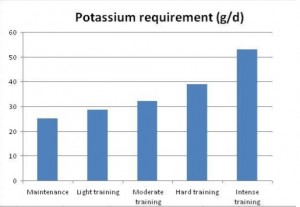
The practical conclusion is that we need to add salt to the ration, in considerable amounts in periods with heavy exercise, especially in summer.
For horses in training, a salt lick in the stable box is usually not adequate. Most horses will not consume enough salt in this situation. It is better to provide salt (granulated or ordinary kitchen salt) directly in the feed trough, preferably together with concentrate. For broodmares and young horses on pasture, sodium intake will be adequate provided they always have access to salt licks.
To make sure that your horses are getting enough sodium (salt) you can use the PC-Horse program. Once you have defined your horse, remember to select salt together with the other feeds. All feeds contribute Na and Cl to the final diet. Therefore, it is best to add salt at the end, when you have chosen amounts of the other feeds. Select the “Salt” line (blue when active), and click the “Up Arrow” to increase the amount of salt in the ration until the sodium bar turns green (see screenshot). Congratulations: You have balanced salt requirement and salt supply!
PC-Horse has a dedicated module for pasture nutrition. After selecting the horse and then a pasture grass as feed you will be given the option to click on: Horse on pasture. Here you enter how many hours the horse will graze every day, as well as the quality and quantity of the available pasture grass. From this data the program calculates how much you can assume that the horse will eat and how well its nutritional needs will be met.
——————————————————————————–
What does this mean in practice?
Daily intake of roughage varies based on feed quality, production classes, individual appetite and each individual’s place in the herd hierarchy. This means that we must observe horses in a herd closely and make corrections to the feed offered each individual at night-time or early morning to avoid some individuals growing too fat or too thin.
